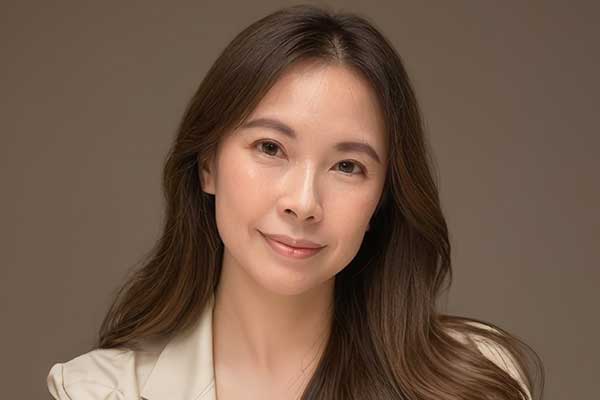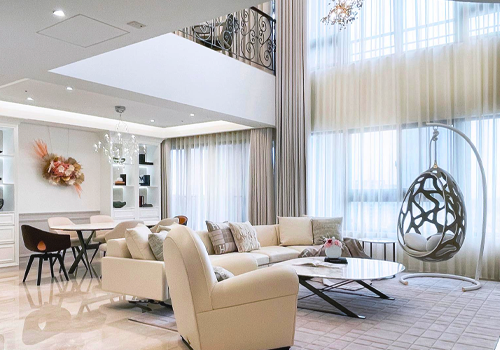
Interview
Ying-Ning Chen
1 Please give us a brief bio of yourself and your design background.
I’m a passionate and detail-driven interior designer with a love for creating spaces that not only look beautiful but also tell a story. With an academic background in French Culture and time spent living in Paris, I developed a deep appreciation for timeless design, architectural heritage, and the emotional power of space—all of which continue to influence my design sensibility today.
2 What made you become/why did you choose to become a designer/artist?
We spend so much of our time indoors, and the environments we live, work, and gather in affect us deeply. Interior design, to me, is a quiet form of storytelling. It’s about crafting atmospheres that make people feel grounded, inspired, or completely themselves. Design is also where creativity and problem-solving meet. Every project brings its own set of challenges—limited square footage, tight budgets, conflicting tastes—and I love finding elegant, meaningful solutions. There’s a certain magic in transforming a blank room into a space that feels alive and uniquely personal.
3 Tell us more about your business/company, job profile, and what you do.
Over the past 10+ years, I’ve worked across residential, commercial, and hospitality projects, blending functionality with aesthetics to craft interiors that feel both thoughtful and inspiring. When I’m not designing, I’m usually visiting museums, exploring historical buildings, or drawing inspiration from architecture and culture—especially those hidden gems that tell the stories of the past. I believe great interior design, like great art, should move you, ground you, and reflect who you truly are.
4 What does “design” mean to you?
For many, design is often seen as decoration—an aesthetic layer added to a space. But for me, as an interior designer, design is so much more than style or surface. It’s about creating environments that tell stories, evoke emotion, and serve real human needs. Design is the intersection of function and feeling. It’s how a well-placed chair encourages conversation, how natural light shapes our mood, or how the texture of a wall can ground us in a moment. Every choice we make—materials, layout, color, proportion—has the potential to influence how someone experiences a space. That impact is powerful, and it’s why I’m drawn to this field.
5 What’s your favorite kind of design and why?
My study background and my time living in Paris gave me a deep appreciation for timeless elegance and the layering of history and modernity. That’s why I’m especially drawn to the modern classic style. I love the balance it strikes: the clean lines and simplicity of contemporary design combined with the charm, craftsmanship, and richness of classical elements. To me, it’s the perfect blend of past and present—sophisticated yet livable, refined yet warm.
6 To you, what makes a “good” design?
It isn’t about perfection—it’s about intention. It’s about asking: How should this space make someone feel? What do they need from it—emotionally, practically, aesthetically? Design becomes a language—one that can express comfort, elegance, clarity, or warmth without a single word. That’s exactly what good design means to me.
7 Describe your design style and its main characteristics.
At the heart of my design philosophy is the belief that spaces should feel comfortable, simple but elegant, balanced, and deeply relaxing. I aim to create interiors that are not only visually beautiful but also emotionally grounding. A well-designed room, in my view, is one that invites you to exhale—to feel at ease, inspired, and truly at home.
8 Tell us about your design process.
Begin with an initial consultation covering the client’s vision, needs, lifestyle, and budget. If possible, I will also visit the site. Then we move into concept and design development. Next, I align the design with financial and logistical feasibility and bring it to life on-site.
9 Do you think your country and its cultural heritage has an impact on your design process?
Yes, of course! Especially the Feng Shui principles—they encourage me to consider more elements in the layout, beyond just making it visually beautiful. I also incorporate local Taiwanese materials, such as wood and bamboo, into the interior space to create a sense of harmony and a warm atmosphere.
10 Congratulations! As the winner of the 2024 MUSE Design Awards, what does it mean to you and your company and team to receive this award distinction?
It’s a chance to contribute to the global design conversation. It reinforces my responsibility to keep designing spaces that are inclusive, sustainable, and transformative. It also pushes me not to repeat what has won—but to evolve, question, and design with even more honesty.
11 Can you explain a bit about the winning work you entered into the 2024 MUSE Design Awards, and why you chose to enter this project?
At the heart of this work is a design language we’ve come to love: a new modern style that feels both timeless and current. It’s classic yet unmistakably modern—a balance of clean architectural lines with soft textures and calming tones. The spaces are full of movement through linear detail, but they remain simple, breathable, and relaxing, offering visual clarity and emotional comfort.
12 What was the biggest challenge with this project?
While we had the full trust of our client—which is a gift we never take for granted—that trust came with the responsibility to move with care. Every decision had to be considered. The biggest challenge? A high-ceilinged space with large structural piles—beautiful in scale but demanding in design. Our goal was to make the space feel open and expansive while visually minimizing the bulk of the columns. It required both architectural sensitivity and creative finesse to make the space feel light, seamless, and natural.
13 How has winning an Award developed your practice/career?
Winning an interior design award has been more than just a career highlight—it’s been a moment of reflection, validation, and quiet transformation. People begin to see you not just as a designer, but as someone whose work speaks a language of care, quality, and creativity. It brings a sense of trust before the first meeting even begins.
14 What are your top three (3) favorite things about our industry?
First, transformation—from space to story—is deeply rewarding. Second, designers are always learning—experimenting with materials, exploring new styles, and blending tradition with innovation. It’s a field where creativity knows no bounds, and every project is a new canvas. Finally, one of the most fulfilling aspects of interior design is the deep connection with clients and collaborators. Designers are entrusted with personal dreams and visions, and in return, they build relationships rooted in trust, empathy, and shared goals. Working closely with artisans, architects, contractors, and creatives adds a collaborative spirit that makes each project richer.
15 What makes your country specifically, unique in the design industry?
What makes my country unique is how seamlessly designers weave these traditional elements into contemporary spaces—creating interiors that are timeless yet modern, with emotional and historical depth. We often prioritize calm, balanced spaces with strong connections to nature—a value influenced by Tea culture and Zen philosophies. Designers are skilled at creating environments that feel peaceful, airy, and natural, even in urban settings. My country is increasingly recognized in global design circles—not just for its aesthetic, but for its design philosophy, which balances cultural sensitivity, sustainability, and user experience.
16 Where do you see the evolution of design industry going over the next 5-10 years?
Over the next 5 to 10 years, I think AI tools will streamline the creative process. Clients will expect faster visualizations, and designers will shift toward curating AI outputs to make them livable and meaningful. Additionally, smart technology and data will lead to interiors that respond to users’ preferences, moods, or health data. AI will even help predict client preferences before the first sketch is made.
17 If you were a student entering this industry or an aspiring MUSE Design Awards submitter, what advice would you give them?
Every student or award-winning design in this field has a compelling narrative: not just what it is, but why it matters. Think deeply, design responsibly, and communicate powerfully.
18 What resources would you recommend to someone who wants to improve their skills in the design industry?
Besides basic tools such as AutoCAD and SketchUp, some AI tools have become necessary these days. However, I also appreciate traditional ways to improve myself, such as reading magazines or websites. Especially, learning interior design through traveling is one of the most powerful—and underrated—ways to sharpen your design sensibility. Travel exposes you to materials, light, history, spatial flow, and culture in a way no textbook or render ever can.
19 What is your key to success? Any parting words of wisdom?
For me, spaces that feel right, function well, and tell a story—those are the ones that stand out. Works should solve real problems, not just follow trends. The most successful designers never stop learning—from travel, books, art, history, nature, and mistakes. Stay hungry. Stay open. Elegance is not a word but a soul!

